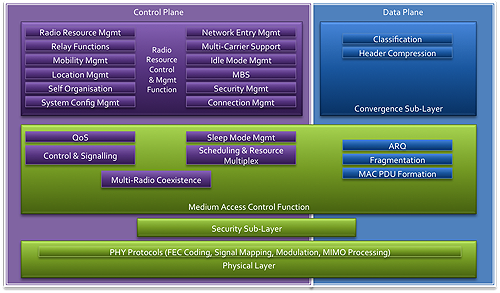On November 21st, the IEEE Comsoc Indonesia Chapter will conduct a seminar to introduce the aspects of 4G Mobile Communications. The seminar will be carried out in Horizon Hotel, Bandung. You might visit Comsoc’s website to see the detail information. I will start the discussion by exploring the necessity of the items mentioned in 4G requirements. Then we will discuss the candidates of the 4G platforms: the LTE, the UMB, and WiMAX II. But we know UMB has been revoked by Qualcomm who then chose the LTE way :). I have blogged LTE a couple times in my other blogs. But it is Arief Hamdani who will explore LTE in details then. My duty is to describe WiMAX II.
You might have known the standard IEEE 802.16e, a.k.a. the Mobile WiMAX. This is the standard for the first mobile broadband access solution that enables the convergence of mobile & fixed broadband network through a common wide-area radio access technology and flexible network architecture. The OFDMA transmission is used for both downlink and uplink. WiMAX II, or the incoming standard IEEE 802.16m is the amendment to develop an advanced air interface to meet the requirement of ITU-R / IMT-Advanced for 4G systems. The data transfer rates will reach 1 Gb/s, but it must have full backward compatibility with existing Mobile WiMAX. The protocol stacks of WiMAX II is as follows:

The objectives and advantages of WiMAX II are, among others:
- Multi hop relay architecture
- Self configuration
- Advanced single-user / multi-user multi antenna schemes and interference mitigation techniques
- Enhanced multicast broadcast service
- Increased VoIP capacity
- Improved cell-edge user throughput
- Support of vehicular speed (? 500 km/h)
To discuss deeper on the issue, I invite you to attend the seminar. Visit the IEEE Comsoc site :).


2009-11-30 at 20:08
I need a more exploration on 802.16m enhancement over 802.16e. Can you help?
2009-12-09 at 23:06
Certainly. Will send you a mail about that.